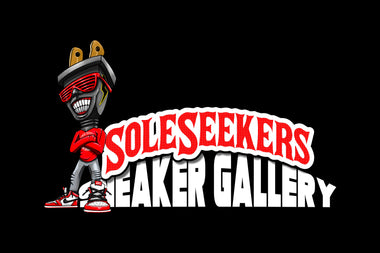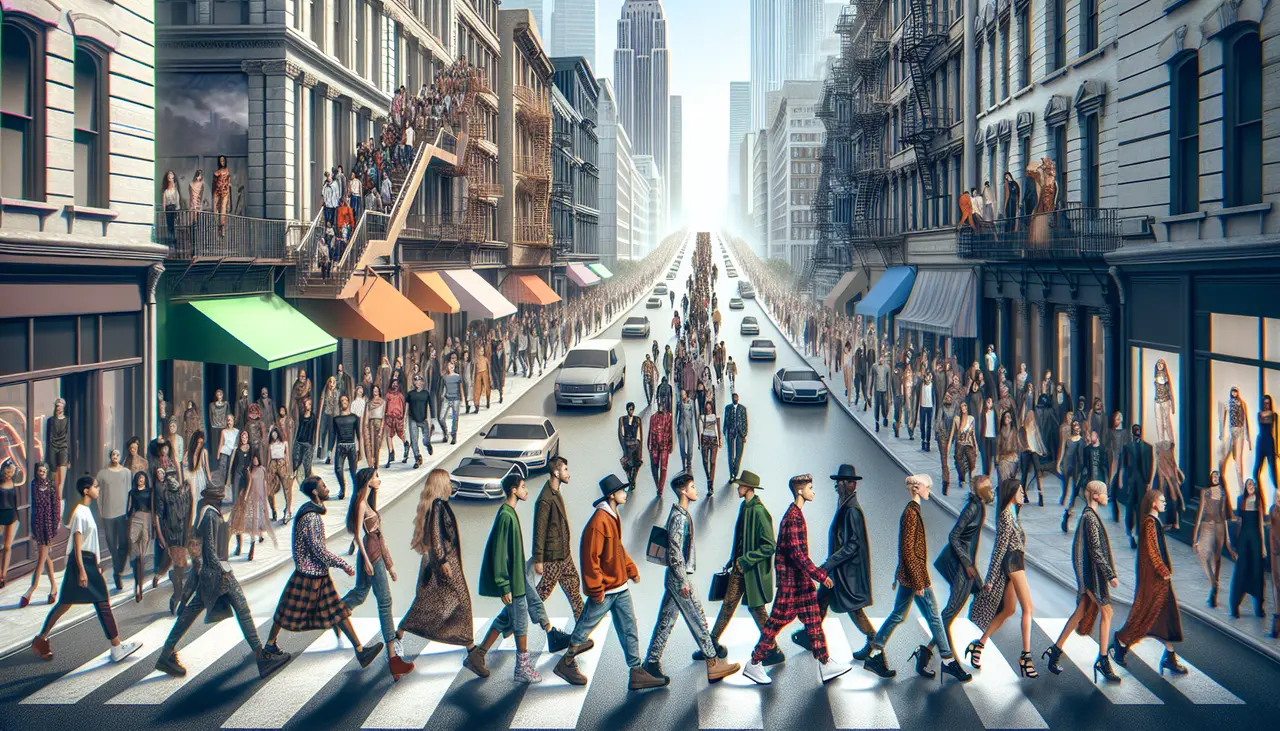From the Streets to the Runway: The Impact of the Supreme Collection on Fashion
Introduction to the Supreme Collection
Supreme started off in 1994 as a skateboarding shop in New York City, blending street culture with fashion. It quickly became more than just a brand; it’s a culture. This journey from the streets to the runway marks a significant moment in fashion history. Supreme is known for its minimalistic logo but maximal impact. Its collections feature bold colors, unique designs, and often, surprising collaborations with artists, designers, and other high-end brands. What sets Supreme apart isn’t just the quality of its clothing but the exclusivity. They drop new items in limited quantities, creating a frenzy among fans and collectors. This strategy has not only boosted its market value but has also shaped how streetwear is perceived in the fashion industry. From skaters in NYC to celebrities on red carpets, Supreme has proven that fashion knows no boundaries.
The Origins of Supreme: Skater Culture Meets Fashion
Supreme started as a small skate shop in New York City in 1994. Its roots are deep in skater culture, which is all about freedom, rebellion, and expressing your true self. The world of fashion noticed Supreme because of its bold, in-your-face designs and its knack for creating limited-edition pieces that everyone suddenly had to have. Think about it, one day you’re a skater wearing a cool shirt, and the next, that shirt represents the peak of high fashion. What Supreme did was blur the lines. It wasn’t just about skate clothes anymore; it was about making a statement, being part of a community that’s on the edge of what’s cool. This blend of street cred and exclusivity caught on fast, transforming Supreme from a niche brand into a global fashion icon.
The Crossover: How Supreme Entered Mainstream Fashion
Supreme started as a skate brand in 1994. Back then, nobody thought it would take over the fashion world. But, here we are. Supreme made the leap from street corners to fashion runways by sticking to its roots while collaborating with high-end designers. This move attracted not just skaters but also celebrities and fashion influencers. Collaborations with brands like Louis Vuitton and North Face showed everyone that Supreme meant business. It wasn’t just about the logo; it was the exclusivity and hype around their drops that made everyone want a piece. Supreme’s approach to fashion is simple – keep it cool, make it scarce, and they will come. This strategy turned a skate shop into a global fashion icon. By doing so, Supreme proved that streetwear could hang with haute couture on the runway, changing how we think about fashion intersections.
The Supreme Logo: A Symbol of Cultural Status
The Supreme logo, that bold, red rectangle with ‘Supreme’ written in white, started as a mark of New York skate culture. Today, it’s a global symbol of style and exclusivity. It’s not just any logo; it’s one that says you’re part of an elite group that knows what’s cool before it hits the mainstream. This shift didn’t happen overnight. Streetwear fans and fashion enthusiasts began recognizing Supreme for its unique collaborations and limited product drops. This strategy created a sense of urgency and exclusivity around the brand. Now, seeing the Supreme logo on someone is like spotting a rare bird. It’s a sign they have their finger on the pulse of fashion. They likely stood in line for hours or paid more than you’d think reasonable for a piece of clothing. But it’s not just about the effort or the price. It’s about belonging to a community that sets trends rather than follows them. So, when you see that red and white logo, you’re not just looking at a brand. You’re looking at a badge of cultural status that has crossed from the streets to the runway, redefining what fashion means along the way.
Key Pieces That Defined the Supreme Collection
Supreme didn’t just appear on the scene; it stormed it with pieces that turned heads and set the streets on fire with style. Let’s talk about the heavy hitters, the items that encapsulated Supreme’s swagger. First up, the box logo hoodie, a symbol of the brand’s identity that’s as sought after today as it was the day it dropped. It’s simple, it’s bold, and it screams Supreme. Then, there’s the collaboration with Louis Vuitton. This wasn’t just any collab; it was a meeting of streetwear and high fashion, showing the world that Supreme belonged on the runway too. The skate decks covered in unique artwork? They weren’t just for riding; they became collector’s items, hanging on walls instead of hitting the streets. And we can’t forget about the limited edition sneakers. These weren’t just shoes; they were statements. Each release had sneakerheads worldwide buzzing, proving Supreme knew exactly how to leave its mark. These pieces? They weren’t just clothing. They were, and are, icons. Supreme showed that it’s not just about what you wear; it’s about making a statement, and boy, did they make one.
Celebrity Influence and the Supreme Collection
Celebrities have a massive pull in fashion trends, and the Supreme collection is no exception. When stars wear something, it immediately turns heads and starts conversations. Think about it; every time a musician, actor, or influencer is spotted rocking Supreme gear, it lights up social media and fashion blogs. This visibility does two things: it cements Supreme’s status as a trendsetter and makes their pieces highly sought-after. The brand has mastered the art of scarcity, dropping limited quantities, which only adds to the frenzy. Plus, the celebrity endorsement doesn’t just stop at visibility; it gives the brand a sort of credibility that money can’t buy. Suddenly, a hoodie isn’t just a hoodie—it’s a statement. It’s clear, the influence of celebrities wearing Supreme can’t be understated. They’ve played a huge role in elevating the brand from streetwear cult favorite to high fashion staple.
Collaborations: Supreme and Luxury Fashion Brands
Supreme started off as a skateboarding shop in New York and quickly became a cult favorite, shaking up the fashion world with its unique collaborations with luxury fashion brands. These partnerships bridge the gap between streetwear and high-end fashion, making a bold statement on both the runway and the street. When Supreme teams up with brands like Louis Vuitton, the result is a blend of casual attire and luxury that sells out within minutes. Why? Because these collaborations create exclusive products that combine the quality and prestige of luxury brands with Supreme’s edgy street style. Prices for these items often soar far above their original value on the resale market, making them not just fashion statements but investments. Keep an eye on Supreme’s latest collaborations – they’re reshaping fashion, one partnership at a time.
The Economic Impact of Supreme on the Fashion Industry
Supreme started as a skateboarding shop in New York in 1994. Now, it’s a global fashion giant. Its bold move into high fashion has changed the game. The brand’s limited releases cause a frenzy, with items selling out in seconds. This scarcity boosts demand, pushing prices sky high on the resale market. Supreme’s collaborations with luxury brands like Louis Vuitton have blurred the lines between streetwear and high fashion, leading to explosive growth in both sectors. Economically, Supreme has shown that streetwear can be luxury, altering how fashion brands approach design and sales strategy. Its model has encouraged other brands to adopt the drop system, creating a fast-paced market where hype drives sales. The impact is massive, influencing not just fashion trends but the economy of fashion itself, introducing a new era where streetwear and luxury merge, creating new opportunities for revenue and market expansion.
Criticisms and Controversies Surrounding Supreme
Supreme has not just skated through the fashion world without hitting a few bumps. The brand has faced its share of criticism and controversies. One sticking point has been its aggressive approach to copyright and brand protection. Supreme doesn’t just defend its logo; it goes after anyone they see as stepping on their toes, sometimes hitting small artists and creators. This has sparked debates on whether they’re protecting their brand or stifling creativity. Another hot topic is their limited release strategy. While it creates hype, it also fuels reselling at sky-high prices. This exclusivity has been criticized for benefiting the few while the average fan misses out. Lastly, collaborations with high-end brands have drawn mixed reactions. Some fans see it as a betrayal, moving away from its street roots to cozy up with the luxury market. Each of these points shows that while Supreme has climbed high, it’s definitely ruffled some feathers along the way.
The Lasting Legacy of Supreme on Streetwear and Fashion Trends
Supreme began as a skateboarding shop in New York City, but quickly morphed into a global fashion giant. Its success story is not just about selling clothes; it’s about setting trends and shifting the landscape of streetwear. The brand’s bold logos and limited-edition drops turned it into a symbol of exclusivity and coolness. Even though Supreme collaborates with high-end designers and luxury brands, it never loses its streetwise edge. This mix of underground grit with upscale glamour reshaped how we view collaborations in fashion today. The legacy of Supreme in the fashion world rests on its ability to constantly innovate while staying true to its urban roots. Its impact? Massive. Streetwear is no longer a subculture but a leading force driving global fashion trends. From hats to sneakers, Supreme’s influence is unmistakable, merging the worlds of art, culture, and skateboarding with fashion in ways few brands have managed.





Leave a comment